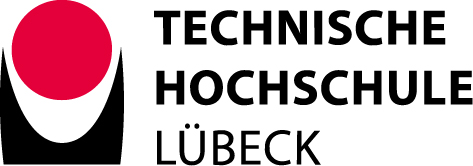Since 2000, the amount of renewable energies in Northern Germany has increased rapidly. Dörpum, a town district of Bordelum (North Friesland, Schleswig-Holstein, Germany), is an example for that. By now, solely its photovoltaic energy production is about 300% of its electrical energy demand averaged over one year, hence the town has the theoretical potential for a total self-supply. Since photovoltaic and wind power plants are strongly weather dependent, energy storages are required to reach a high degree of autarky.
For an efficient use of their renewable energy resources on household and grid level, a model of Dörpum’s power grid is developed to analyze the power flow from each grid element to the interconnection point of the distribution system operator. A battery energy storage is modelled to show the impact of increased self-consumption on the degree of autarky of the power grid. With the model of Dörpum and the option to simulate battery storages, different study cases are created including household- and grid-level batteries and the use of an already existing wind power plant as well as the local combined heat and power station. Furthermore, a study case is developed considering an expansion of prosumers within the local power grid with a self-consumption oriented photovoltaic power generation.
The study cases require basic assumptions due to complexity restrictions of the grid model; therefore, batteries are not allowed to be charged or discharged by the superior grid layer and photovoltaics feed-in is not throttled.
The first study case represents the current situation of Dörpum’s grid including all the loads of the village, such as households, farms, commercials and the traffic lighting. The households are modelled with a non-standardized load profile generated by a Load Profile Generator for this specific region based on data of the German Census of 2011. Some of the households and farms have a photovoltaic power generator, so they are called prosumers. The generation with photovoltaics is considered as current state as well. Figure 1 shows the total energy demand for each month divided into the supply by the distribution system operator and the direct consumption covered by the photovoltaics. The ratio between the direct consumption and the total demand is called degree of autarky, whereas the ratio between the direct consumption and the total energy generated is called ratio of self-consumption. Both values can be found in Table 1 for each of the study cases.

Figure 1: Study Case I - Current State of Dörpum – without Battery Storages
In the second study case presented in Figure 2 all prosumers in Dörpum use a household battery to cover there their own energy demand during morning and night times (green bars as battery discharge). On grid level this doesn’t have a massive impact on the degree of autarky since there is only a small portion of prosumers. Their over production is sold to the DSO in this case.

Figure 2: Study Case II – Prosumers with Batteries
Instead of using prosumer batteries in Study Case III a large grid battery is used. This battery is also set up to cover the total energy demand, in this case the demand of Dörpum. This results in an expensive and large investment but provides satisfactory results for the degree of autarky.

Figure 3: Study Case III – Use of large Grid Battery
Using a smaller grid battery in combination with one of the already existing wind power plant in Study Case IV a high degree of autarky can as well be achieved. The grid battery used has the same capacity as the one on Pellworm an island in the North Sea.

Figure 4: Study Case IV - Additional WPP and small Grid Battery
Table 1: Simulation Result - Degree of Autarky and Self-Consumption
Concluding, the economic perspective of an investment into both the sole implementation of a battery storage to already existing roof-top photovoltaic power plants (Study Case II) and an expansion of photovoltaic self-consumption systems for households are examined. In future the cost optimization will be part of the energy-simulations. An expansion-scenario will discover the costs and the effectiveness of autarky-optimized Photovoltaic-Battery-Setups for those households which have no energy production units today. This is important to demonstrate the benefits to the citizens of Dörpum when investing in such systems.
Authors: Malte Myrau and Joscha Höck
Contact: Malte Myrau (malte.myrau@fh-luebeck.de)




